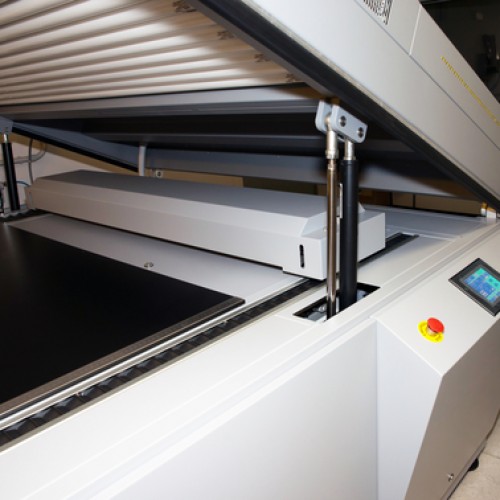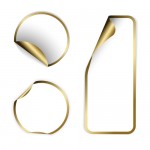The quality of your custom printed labels will ride on the quality of the machine that you use to print them. When it comes to custom printed labels, there are two key printing formats that printers use, namely flexographic printing and digital printing. Both of these use different technology and their suitability depends on your needs among other things. In this article, we explain the difference between the two technologies and when either might work for you.
Flexographic or Offset Printing
Flexographic or offset printing has been around for a while and thus is often referred to as the traditional printing format. Flexographic printing machines utilize rubber plates that are attached to cylindrical containers that hold the ink. Pressing the plates on the paper creates impressions and this is done through thousands of tiny pockets or bubbles on the plates that hold and apply the ink uniformly on the surface.
Flexographic label printing produces and maintains high quality print runs and the quality of images and printing produced through this method is very good. Flexographic printing is expensive to set up but cheaper per print run. This is because the plates have to be customized for that specific print run but once that is done, they can be used to run a large quantity of labels. Because of this, this method of printing is particularly good for large print runs as the overall cost per label is lower than digital printing.
Digital Label Printing
The second method of printing custom labels is through digital printing machines. Here the image is printed directly from an image on the computer without the necessity of developing printing plates as with flexographic printing. This of course presents a variety of benefits but also some limitations. Some of these benefits include lower set up costs and the ability to print ‘on demand’ and do smaller print runs cost effectively.
Digital label printing also has a much quicker turn around time for the customer and because some digital printing machines can utilize a 7-colorprocess (as opposed to the 4-color CMYK color process in flexographic printing) they are able to reproduce a greater variety of colors than flexographic printing. The downside is that the cost per label for this method is higher than in flexographic printing. Because of this, digital label printing is good for small print runs or for label needs that are constantly changing and need to be varied frequently.
Flexographic Printing and Digital Printing: What is Best for You?
The good news is that modern technology is coming up with digital machines that are able to produce the color clarity and quality of flexographic label printing machines while giving you all the advantages of digital printing. This means that when you order custom labels from a reputable label supplier, you are able to enjoy the best of both worlds. However the choice between the two printing processes hinges on the quantity that you wish to produce, the turn-around time that you expect and the variety of colors that your labels need.







